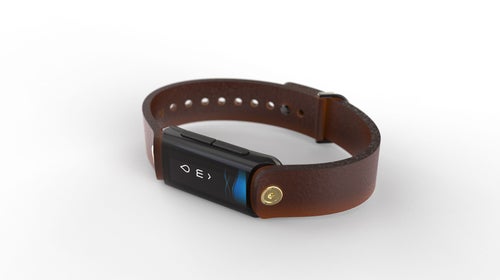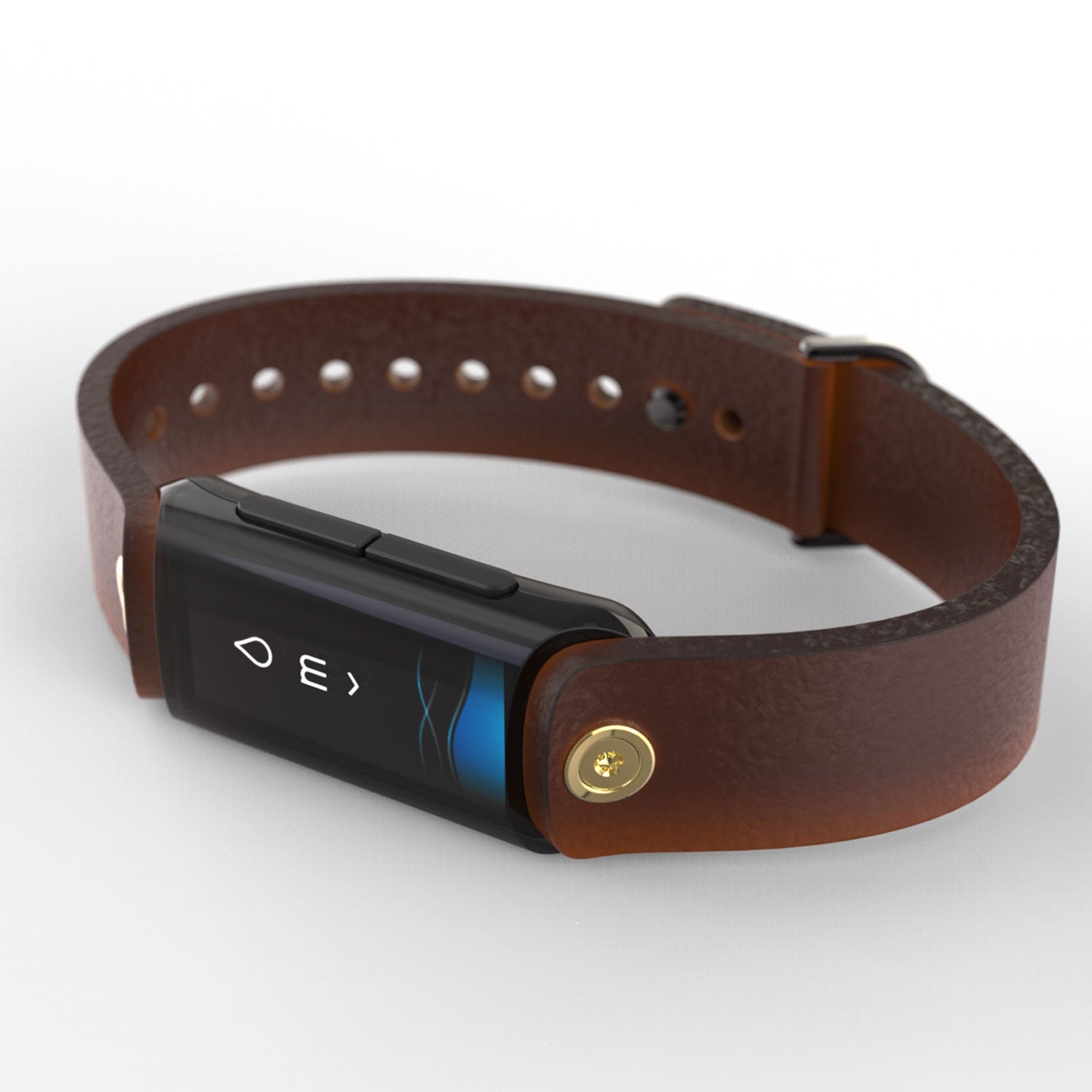Hydration once seemed straightforward. You’re thirsty, you drink.
But in the last several years, hydration has become about as complicated as immigration reform. There has been news that drinking can hurt us; that dehydration may ; that it ; that drinking insufficient amounts of water puts people in a ; that ; that a lack of water gives folks . Of course, in all seriousness, dehydration does kill people.
Next year, a startup from Austin, Texas, —with a new wearable that tells you how much to drink and when. There is at least one solid reason—other than saving lives—why we should anticipate its arrival (or consider heeding its Kickstarter campaign, which launched earlier this month): to empower us to solve our own hydration riddles.
“Hydration monitoring the way we think it should be done doesn’t yet exist,” says Dustin Freckleton, the 33-year-old CEO and founder of BSX Technologies, the 15-person, sensor-focused outfit that’s developing the new device, which will be called LVL.
Inside the company’s fifteenth-story, downtown Austin office building is a 150-square foot, fluorescent-lit space called the Sweat Room. Among other things, the enclosed area houses items like a stationary trainer for bicycles, a humidifier, and four space heaters. “The landlord reworked the HVAC system for us,” Freckleton told me not long ago from inside the Sweat Room. Right next to Freckleton was a wired-up, fast-pedaling human lab rat—one of hundreds of local athletes that BSX has brought in to vigorously exercise and sweat in 104-degree conditions. Meanwhile, rubber-gloved research scientists fussed over the cyclist’s physiological data.
“Clinical dehydration is maybe three percent,” said Freckleton. “We’re getting people in here to seven or eight percent.”
Freckleton has both an MD and an MBA, and he takes the business of hydration personally. Almost a decade ago, Freckleton suffered from a stroke that left him re-learning to walk, and grateful to be alive. (He’s now fully recovered.) He blamed that disabling setback on serious dehydration.
“Almost ever since, I’ve been asking myself, are we really measuring what matters?” he says.
LVL, BSX claims, will familiarize you with however much water you personally want and perhaps need. It will work akin to your car’s gas gauge, indicating when you’re full up, creeping toward a half-tank, or working with far less. It will precisely tie your hydration levels to exertion rates as well as sleep performance. It will do all of this courtesy of what the company claims is a proprietary, superior sensor technology.
Most of today’s available wearables feature LED sensors that shine a green light into one’s veins. But for a variety of reasons, the widely used technology has often remained frustratingly inaccurate. Alternately, the BSX sensors shine light in the red and “near infrared” (frequently referred to as “NIRS”) range. The technology, which produces longer wavelengths that reach commendably far into the layers of human tissue for information, has long been used in medical devices (monitoring the likes of heart rate, and oxygen saturation values of blood).
Freckleton claims that his company’s crowning achievements include both fitting the sensor technology into a minimalist wearable, and evolving its capabilities to perform the unprecedented task of monitoring hydration. The sensors essentially derive their information from our plasma osmolality—our blood’s level of concentration. BSX claims that the LVL has shown to be accurate within +/- 0.5 percent of one’s water weight—and weight and dehydration can be correlated.
Perhaps the best indication that the LVL might realize its promise and precision is the company’s first product, the (from $300 to $420). That device, which was introduced in 2014, is a red-LED wearable that bloodlessly measures lactate threshold. In testing, The Journal of Strength and Conditioning Research ultimately .
One potential caveat? The BSXinsight’s sensors are virtually uncompromised by the kind of ambient light that can dilute their performance—because the Insight is worn in the pocket of a sleeve that goes around an athlete’s calf. The LVL, meanwhile, is worn around the wrist, where all sorts of light can creep in.
BSX says that it’s past such hurdles. “Measuring from the wrist is more difficult,” Freckleton wrote me in a follow-up email. “That’s why it took us two years to get here.”
Perhaps the hard work has already paid off. BSX claims that its sensor innovation and intellectual property is the envy of its competition—some of them publicly traded giants in the wearables industry. The startup, Freckleton told me, already owns eight patents on its technologies, and LVL beta units will ultimately be tested by the University of Connecticut’s Korey Stringer Institute, which specializes in hydration research.
BSX believes that the LVL will debut by summer 2017. The wearable could be a no-brainer purchase for the elderly (who are notably susceptible to dehydration), as well as soldiers and workers who have no choice but to endure hot weather. But in part, the LVL’s success will also depend on how badly athletes want to tie their performance precisely to their levels of hydration (and pay $199). Every other jock will, at least relatively speaking, apparently have to guess at how much water to drink—and rely on some very old sensor technology: the tongue.


